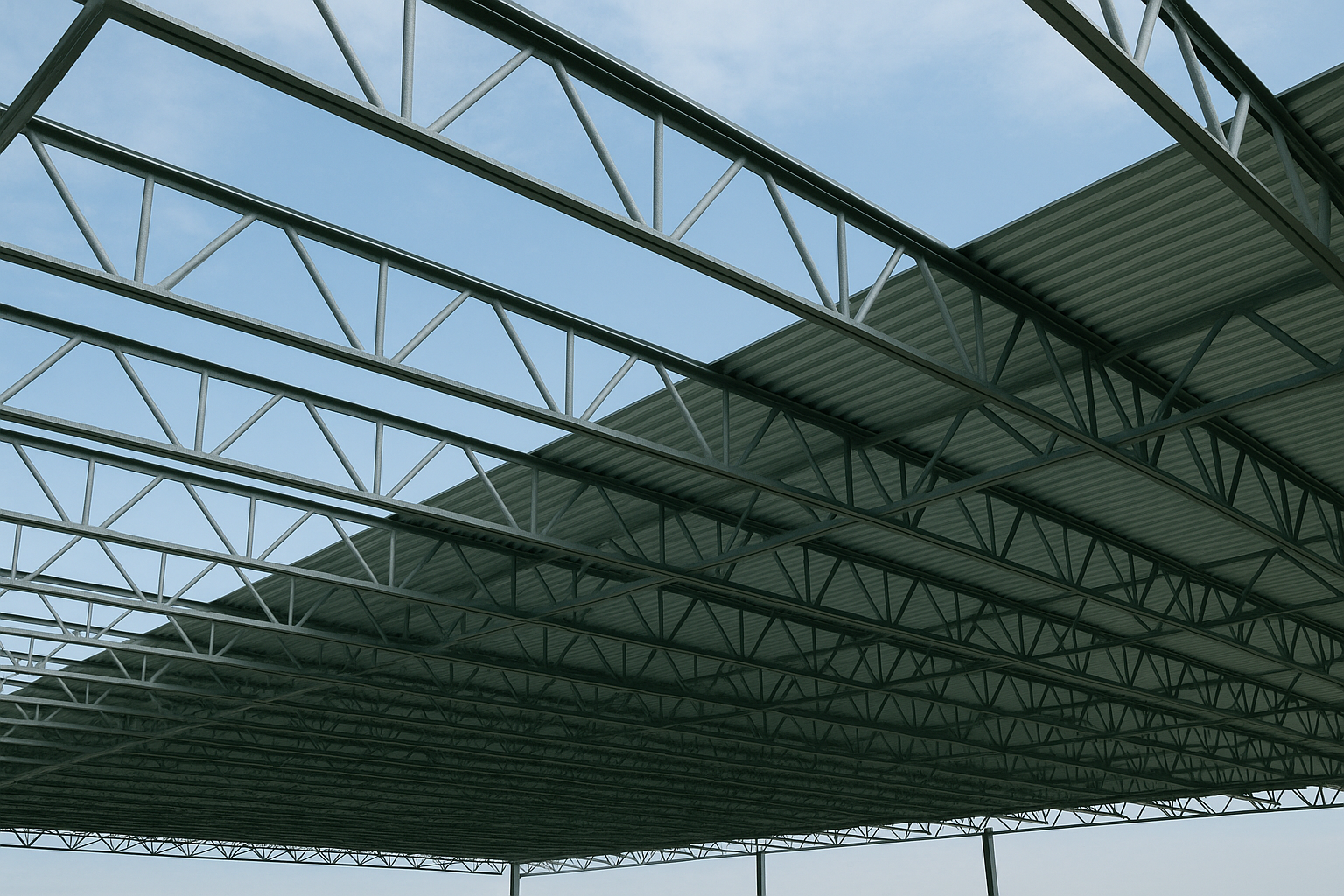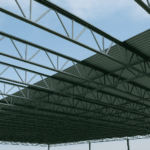The Steel Joist Institute (SJI) has been a cornerstone in developing and standardizing open web steel joists since 1928. Its current catalog—the 44th edition—provides the latest specifications, load tables, and design guidance for engineers and architects across the construction industry.
Introduction to Open Web Steel Joists
Open web steel joists are lightweight, high-strength truss-like members used to support floors and roofs in commercial, industrial, and institutional buildings. Joist Girders serve as the primary framing members, carrying concentrated loads to columns while distributing loads to secondary joists.
Key advantages include:
- Efficient use of steel, minimizing weight and cost.
- Flexibility in accommodating ductwork, piping, and other mechanical systems through their open web configuration.
- Wide span capabilities with predictable structural performance.
Evolution and Standardization
- 1930s–1970s: Growth of standard joist types (K-Series, LH, DLH) to meet diverse span and load requirements.
- 2015: SJI unified separate specifications into ANSI SJI 100-2015, covering K-Series, LH/DLH-Series, and Joist Girders in one comprehensive standard.
- Additional specifications include composite joists (CJ-Series) and SJI’s Code of Standard Practice, which provides guidance on materials, erection, inspection, and business relations.
Joist Series and Applications
- K-Series: Depths 10–30 in., spans up to 60 ft., used for moderate roof and floor loads.
- KCS-Series: Modified K-Series designed for constant shear and moment capacities, ideal for specialized load conditions.
- LH-Series (Longspan): Depths 18–48 in., spans up to 96 ft., for heavier roof and floor loads.
- DLH-Series (Deep Longspan): Depths 52–120 in., spans up to 240 ft., suited for stadiums, arenas, and large industrial facilities.
- Joist Girders: Primary load-carrying members, depths 20–120 in., spans 20–120 ft., designed for panel point loads.
Design Tools and Resources
SJI provides engineers with a suite of design tools, including:
- Roof and Floor Bay Analysis
- Joist Girder Moment Connection Design
- Virtual Joists and Girders
- Floor Vibration Analysis
These tools simplify load evaluation, vibration checks, and integration with building systems.
Specification and Code Requirements
When specifying joists, engineers must:
- Provide complete load diagrams (uniform, concentrated, uplift, axial, and moment loads).
- Include self-weight of joists and bridging in design.
- Identify special conditions (extensions, non-standard configurations, concentrated brace loads).
- Follow applicable codes such as IBC Section 2207, ASCE/SEI 7, and local jurisdiction requirements.
Deflection criteria, bridging requirements, and concentrated loads must be explicitly stated on contract drawings to ensure accurate pricing, manufacturing, and safety in erection.
Industry Practice and Construction Integration
- Structural Design Process: From bay layout to diaphragm design, joists are selected as part of an integrated structural system.
- Manufacturer’s Workflow: From bid preparation through shop drawings, fabrication, and delivery, joist producers follow strict SJI guidelines.
- BIM Integration: SJI supports Building Information Modeling (BIM) for coordination with other trades, reducing field conflicts and streamlining erection.
Conclusion
Steel joists and joist girders remain essential components in modern construction due to their efficiency, adaptability, and proven standards. With ongoing updates to specifications, design tools, and integration with BIM, engineers and architects can design structures that are safe, economical, and optimized for long-span applications.
For further resources, engineers can access SJI’s catalog, technical digests, and design tools at Steel Joist Institute’s website, https://steeljoist.org.



